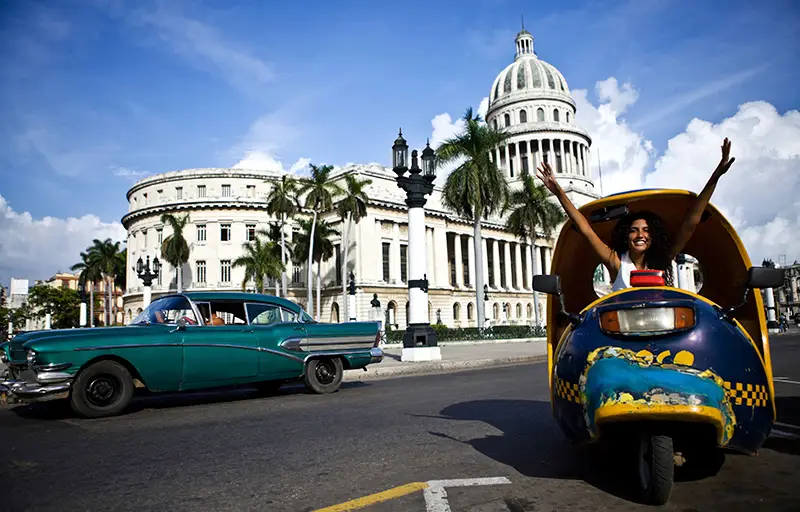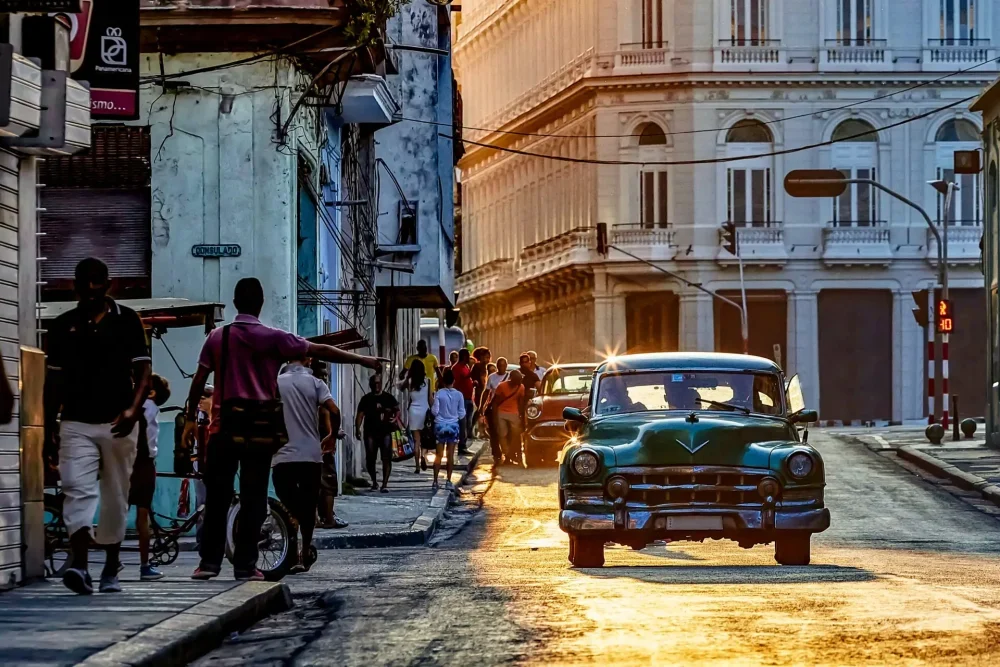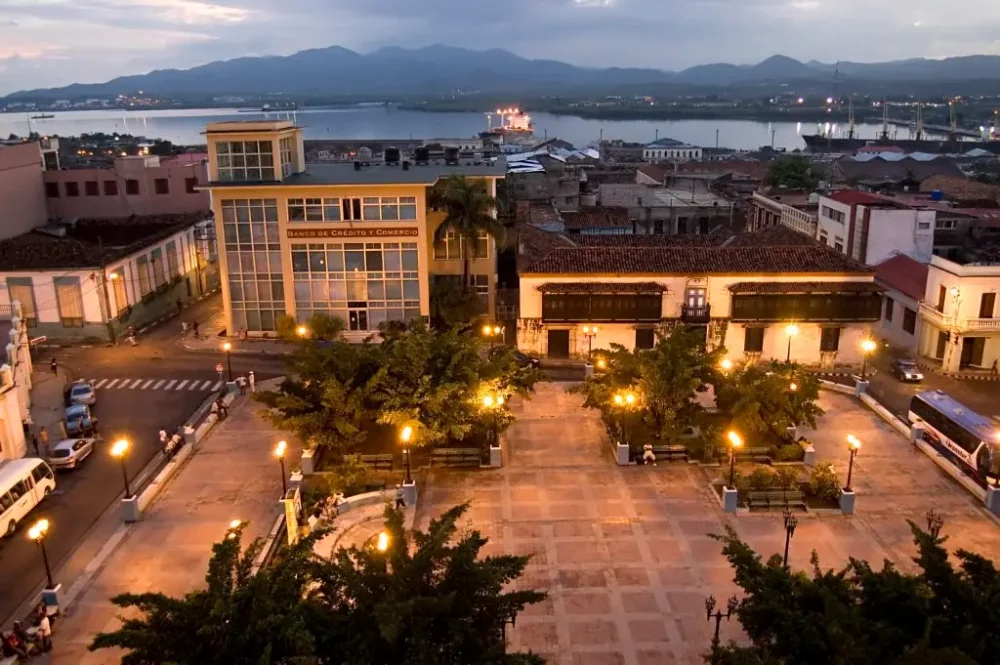Cuba is a country that seems to be frozen in time, preserving its special flavour, unique architecture and spirit of freedom. It attracts travellers from all over the world with its endless beaches, retro atmosphere, rich history and the hospitality of the locals. In 2025, interest in Cuba will reach a new level: improved tourist infrastructure, new resort complexes and the island’s enduring charm make it one of the best holiday destinations.

No visa difficulties for Russians, a variety of excursions and sights, the famous all-inclusive system and the opportunity to completely disconnect from the digital world. These are some of the reasons why it is worth travelling to Cuba. Still undecided about travelling to Cuba. Here are the top 8 compelling reasons to travel. They will help you make the right decision.
Why visit Cuba
Cuba is more than just a resort. Here you can enjoy nature, culture, history and an atmosphere that cannot be forgotten.
Top 8 reasons why you should visit this resort:
- Unique atmosphere.
- Luxurious beaches.
- Colonial architecture.
- Inimitable Cuban cuisine.
- The rhythms of salsa and Cuban jazz.
- Historical Legacy.
- Diving and ecotourism.
- Authenticity and the atmosphere of the past.
Let’s take a closer look at the reasons why this resort is noteworthy.
Cuba’s beaches: a turquoise dream in every shot
 Caribbean beaches are a paradise for lovers of seaside holidays. Transparent turquoise water, snow-white sand, palm trees sloping to the water and warm climate create ideal conditions for beach relaxation.
Caribbean beaches are a paradise for lovers of seaside holidays. Transparent turquoise water, snow-white sand, palm trees sloping to the water and warm climate create ideal conditions for beach relaxation.
Cuba is consistently ranked among the world’s top beach destinations, offering a unique combination of pristine nature and developed resort infrastructure. Let’s take a look at the popular beaches:
- Varadero is the country’s flagship beach resort. 22 kilometres of sandy coastline washed by the warm waters of the Atlantic. It is home to Cuba’s best all-inclusive hotels, nightclubs, restaurants and world-class golf clubs.
- Cayo Coco and Cayo Guillermo are islands where the beaches remain virtually untouched by man. The azure sea, white sand dunes and wild flamingos create a truly fabulous picture.
- Playa Paraiso and Playa Sirena (Cayo Largo) are Cuba’s most secluded coasts, reminiscent of the landscapes of the Maldives. The clear water, lack of big waves and low crowds make them ideal for romantic holidays.
- Playa Esmeralda and Guardalavaca are the jewels of Cuba’s east coast, surrounded by rainforests and coral reefs. These beaches are popular for snorkelling and diving.
- Playa Santa Maria is the closest beach to Havana with clean fine sand and calm sea. An excellent option for those who want to alternate excursions around the capital with a holiday by the ocean.
In 2025, new resort areas with even more developed infrastructure will open in Cuba. There are plans to expand the beach complexes on the islands of Cayo Santa Maria and Cayo Cruz, which will provide tourists with even more comfort and holiday opportunities. Holidays in Cuba are becoming even more affordable, diverse and comfortable.
Cuba without a visa: easy travelling
Travelling to Cuba does not require complicated bureaucratic procedures. Russian citizens do not need a visa, it is enough to present a foreign passport and fill in a migration card upon arrival.
What you need to know about entry:
- The visa-free regime allows you to stay in Cuba for up to 90 days;
- no complicated documents, certificates and prior authorisations are required;
- Unlike some Caribbean countries, the resort offers tourists maximum freedom of movement.
Cuba is a place where you can go spontaneously, without much preparation, just by buying a plane ticket. That is why a trip to Cuba is an easy, affordable and comfortable holiday option.
Cuba is an all-inclusive destination
Hotels in Cuba offer a unique all-inclusive system that includes everything from food and drink to cultural entertainment.
What’s different about Cuba’s all-inclusives?
The best resorts in Cuba provide guests with not only the standard service, but also such privileges as:
- Real Cuban rum in unlimited quantities.
- Author cocktails including the famous mojitos and daiquiris.
- Fresh seafood, lobster and exotic fruits at hotel restaurants.
- Cuban cigars as a bonus for guests of premium hotels.
Some of the best hotels in 2025 include: Melia Cohiba, Paradisus Princesa Del Mar, Iberostar Laguna Azul. They offer guests first-class service, beach parties and themed events.
Cuba’s sights: history at every turn
Cuba is not just about the beaches, but also about the history you can see for yourself. Colonial architecture, revolutionary monuments, ancient fortresses and museums create a special atmosphere.
Where to get a sense of Cuba’s history:
- Old Havana (Habana Vieja) is the historic centre of the capital and a UNESCO heritage site. Narrow streets, lush baroque cathedrals, colonial palaces and the atmosphere of the past create a unique flavour.
- Fort El Morro is a majestic 16th century fortress guarding the entrance to Havana harbour. Its walls offer panoramic views of the city and the Caribbean Sea.
- The city of Trinidad is one of the best preserved colonial cities in Latin America, where you can see old mansions, cobblestone streets and the famous Plaza Mayor.
- The Revolution Museum in Havana is a former presidential palace turned museum that tells the story of Cuba’s struggle for independence and revolutionary events.
Cuba will have new tourist destinations in 2025. They cover lesser-known but fascinating historical locations.
Culinary traditions of Cuba
Cuban cuisine is an explosion of flavours and aromas, a fusion of Spanish, African and Caribbean traditions. Here every meal becomes a real gastronomic adventure.
What’s a must-try:
- Ropa vieja is a flavourful stew with vegetables and spices, served with rice and bananas.
- Tamales are corn cakes wrapped in leaves and steamed.
- Arroz congrí is a traditional Cuban side dish of black rice with beans and aromatic spices.
- Lechón asado – roast suckling pig with a side dish of yucca and cassava.
The best restaurants are considered to be: La Guarida in Havana, Casa de la Trova in Santiago de Cuba. As well as numerous family-run “paladares” in Trinidad and Varadero, which serve authentic Cuban cuisine.
Reasons to go to Cuba
Cuba has limited internet access, making a holiday here a true digital detox.
What to do instead of social media:
- to learn to salsa dance in the street squares;
- stroll through small cosy towns with colonial architecture;
- attend rum tastings and cigar masterclasses.
Cuba 2025 remains a place where people live in the moment and enjoy life without constant distractions.

Conclusion
 Why visit Cuba? Because it’s not just a holiday, but a complete immersion into another world. A world where bright colours, incendiary music and inexpressible atmosphere create a unique experience. Cuba 2025 awaits new travellers, offering the best resorts, beaches, gastronomy and cultural experiences. Go where life is vibrant, history comes alive and holidays are an adventure.
Why visit Cuba? Because it’s not just a holiday, but a complete immersion into another world. A world where bright colours, incendiary music and inexpressible atmosphere create a unique experience. Cuba 2025 awaits new travellers, offering the best resorts, beaches, gastronomy and cultural experiences. Go where life is vibrant, history comes alive and holidays are an adventure.
 en
en  ar
ar  de
de  es
es  fr
fr  nl
nl  hi
hi  it
it  pt
pt  el
el 



